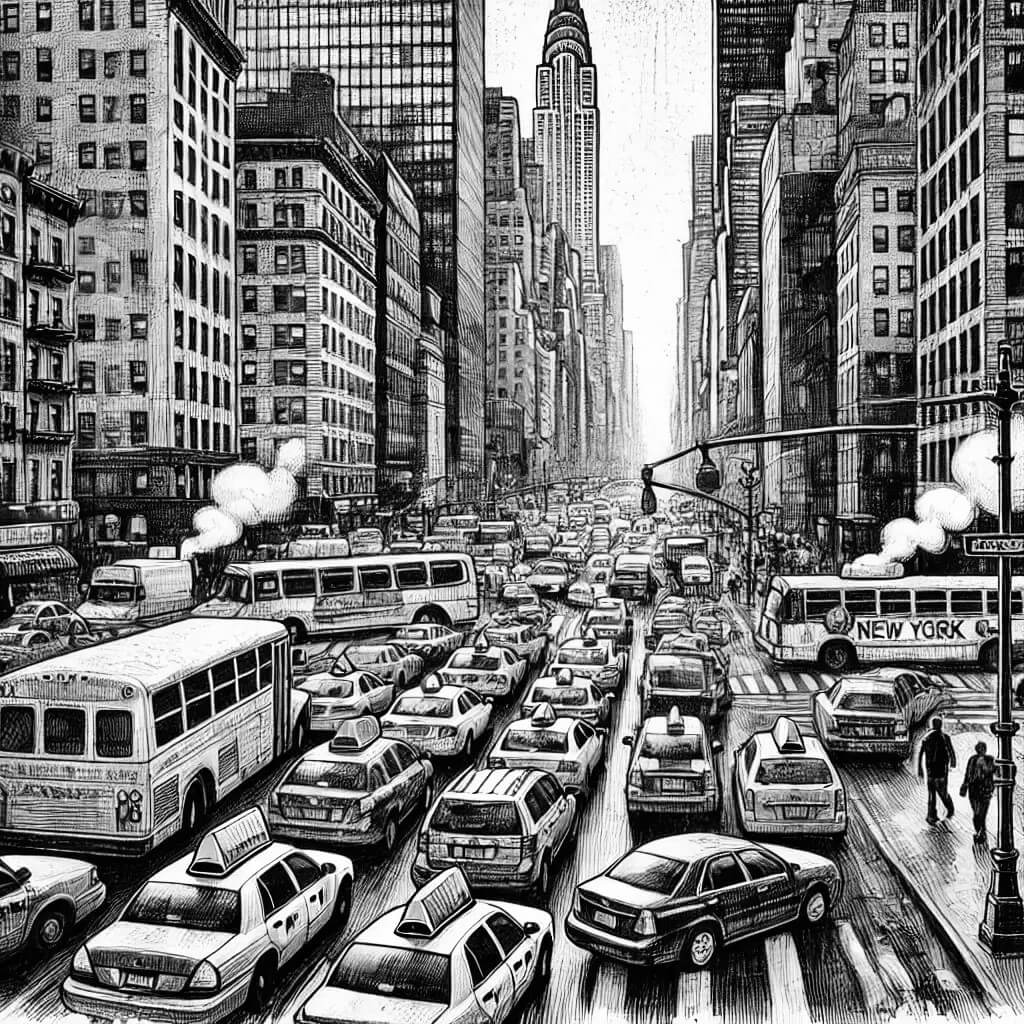Lesson made on June 12, 2023
Download Printable Lesson (PDF)
Download Printable Answer Key (PDF)
Reading Lesson:
New York City is starting a program that will charge people money, or a toll, for driving in a super busy area called Lower Manhattan. This plan, known as “congestion pricing,” is a first for any city in the United States.
The main idea of this program is to reduce the number vehicles that come into this area each day. Too many vehicles make this part of the city crowded and slow to get around. Also, all those cars and trucks create pollution.
Prices to drive in the area could be between $9 and $23 during the busiest times of the day. The city expects to start this program next spring.
When the city charges these tolls, it will get a lot of extra money which can be used to improve the city’s buses and subways. This is really important because, after the Covid pandemic, fewer people have been using public transportation and it needs more money to get better and attract more riders.
But not everyone is happy with this plan. Some people, like taxi drivers, are worried they’ll lose business because people might not want to pay extra to ride into Lower Manhattan. Also, people who live in far-off parts of the city or in New Jersey and have to drive to Lower Manhattan are upset. They feel this plan is unfair to them because they don’t have good public transportation options to get to work or other places in Manhattan.
Comprehension Questions:
Speaking and Writing Activities:
– Discuss these questions with a partner or a small group.
– Choose one topic and write a response to it. Show your writing to a classmate or teacher.
1. Discuss your thoughts on New York City’s plan to charge a toll for driving in Lower Manhattan. Do you think this is a good idea or not? Why?
2. Think of the public transportation where you live now. How good is it? How could it be improved?
3. What other places in the world have bad traffic problems? Do you think a congestion pricing plan would work in those cities?
More Reading Practice:
How did the Covid pandemic affect public transportation in New York City?
For one, many people started to avoid buses and subways because they were worried about getting sick. This change in behavior led to a big drop in the number of people using public transportation. This was a major problem because the money from passengers’ fares helps to keep the buses and subways running smoothly.
With fewer people using public transportation, there was less money for things like repairs and improvements. It also meant there was less money to pay the people who work for the transportation system, like bus drivers and subway operators. This caused a lot of challenges and made it harder for the city to provide the same level of service that people were used to before the pandemic.
At the same time, the city had to spend more money to keep buses and subways clean and safe for those who still needed to use them. Extra cleaning and safety measures were put in place to help prevent the spread of the virus, which increased costs even further.
Which cities in the world have congestion pricing?
Congestion pricing is a system used by some cities around the world to manage traffic and reduce congestion on their roads. It works by charging drivers a fee for using certain roads or entering specific areas during peak times.
One city that has implemented congestion pricing is London, the capital of England. In London, drivers are required to pay a fee called the Congestion Charge when they enter the city center during weekdays. This fee helps to discourage unnecessary car journeys and encourages people to use public transportation instead.
Stockholm, the capital of Sweden, is another city that has congestion pricing. They implemented a system in 2006 called the Stockholm Congestion Tax. Drivers have to pay a fee when entering or exiting the city center during weekdays. The revenue generated from this fee is used to improve public transportation.
Another city that has congestion pricing is Singapore. In Singapore, they have a system called the Electronic Road Pricing (ERP). Under this system, drivers are charged for using certain roads during busy hours. The fee varies depending on the time and location, with higher charges during peak times.
Other cities that have congestion pricing include Milan in Italy, which has a system called Area C, and Gothenburg in Sweden, which has a similar system to Stockholm’s.
Congestion pricing is a way for cities to tackle traffic problems and encourage more sustainable modes of transportation. By charging a fee, cities can reduce the number of cars on the road during peak times, making travel more efficient for everyone. It also helps to improve air quality and create a better environment for people living in these cities.
Link: New York City Transit Official Website
ESL Lesson about Kendrick Lamar

